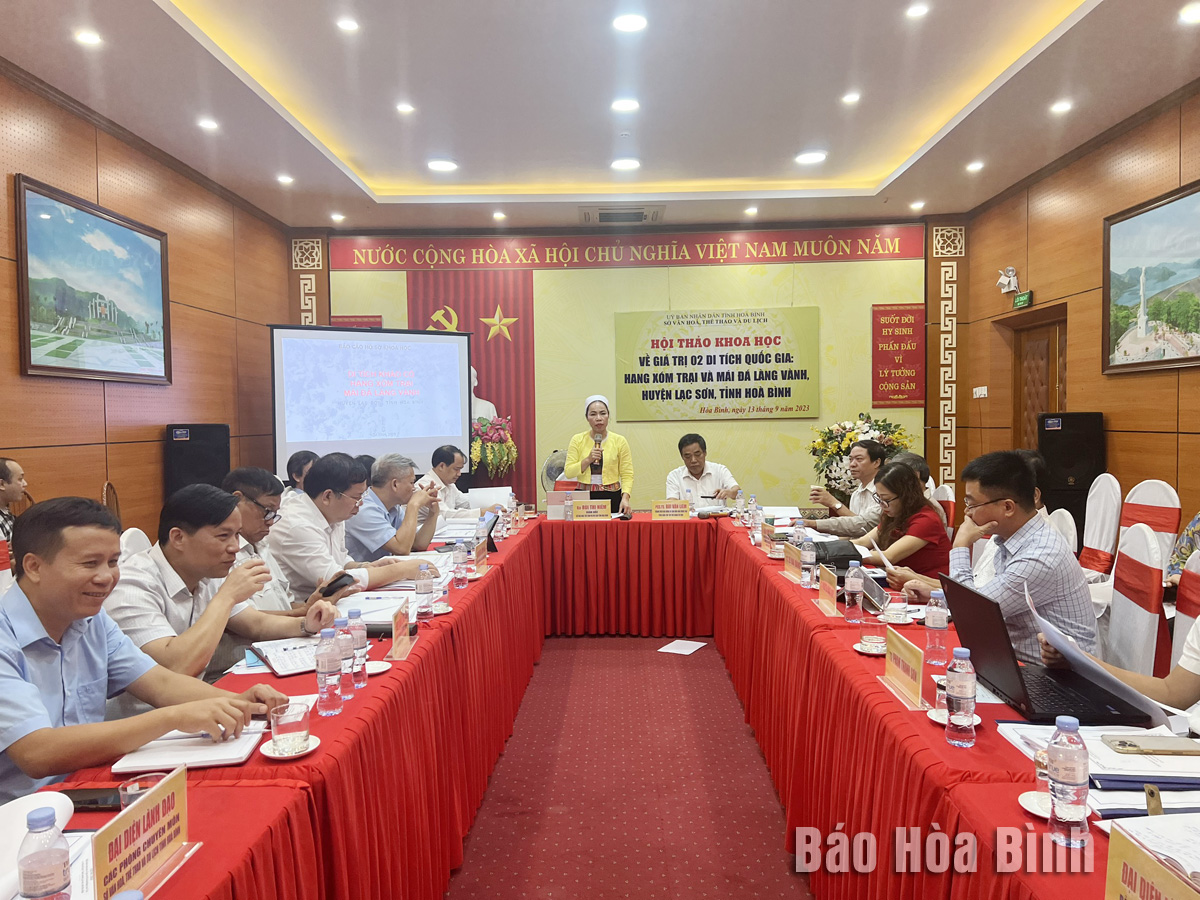



The delegates were exchanged and discussing at the workshop.
The Stone Relics Roof in Vanh and the cave in Trai hamlet are the typical representatives of Hoa Binh Cultural heritage in Hoa Binh in particular and Vietnam in general. These are also the archaeological relics with attractive and unique historical and cultural values, and they are the valuable tourism resources of the province during the period of opening, integration and regional linkage.
The relic of the cave in Trai hamlet was discovered in 1975. The cave dates back to 21,000 years ago and was ranked as a national archaeological relic in 2001. Through many investigations, explorations and excavations, they discovered the huge volume of documents including the mollusk shells, animal tooth bones, human remains, ceramics and especially the stone relics amounting to thousands of artifacts. Up to now, this isHoa Binh Cultural relic with the richest set of relics of stone tools.
The relic of the Stone Roof in Vanh village was discovered and excavated by the French female archaeologist M.Colani in 1929 and was ranked as a national archaeological relic in 2004. The relic still retains its original state and part of the cultural layer. At the root, there are still quite a few layers of sediment from the Quaternary period on the rock wall. The relic has very thick strata, containing a combination of stone tools, ceramics, and burials of Hoa Binh Culture residents dating from 17,000 - 8,000 years ago...
The recent discovery of a rich volume of artifacts, dense cultural layers and new values in Trai cave and Vanh village stone roofs has proven that there are still many Hoa Binh cultural relics in Hoa Binh province, which are mysterious attracting scientists to further research Hoa Binh Culture. Therefore, the preparation of the scientific dossiers proposing to be classified as the national relics, especially the archaeological relics of Trai cave, Tan Lap commune and the relic of the Stone Roof in Vanh village, Yen Phu commune, confirm the importance of the archeological relics in Hoa Binh Culture.
At the conference, the delegates discussed the values of the two relics; At the same time, they provided comments on the important documents to complete the scientific dossiers to submit to the National Cultural Heritage Council and to the Prime Minister for ranking as the special national relics for two national relics in Trai hamlet and the Stone Roof in Vanh village.
The conference has important significance in affirming the historical and cultural value of the two relics. Thereby, this is the evidence of the ancient traces of the primitive people in Vietnam and Southeast Asia; creating new and enriching the historical and cultural tourism routes and destinations of the province, connecting tourism in the system, contributing to creating motivation for socio-economic development, especially the tourism economic development of Hoa province Binh in particular and the Northwest region in general. It wil better serve the people's need for the cultural enjoyment; it is the legal basis for managing, protecting, repairing, embellishing, restoring and promoting the relics. At the same time, the conference is important for preparing the scientific documents to request the classification of the two relics as the special national monuments.